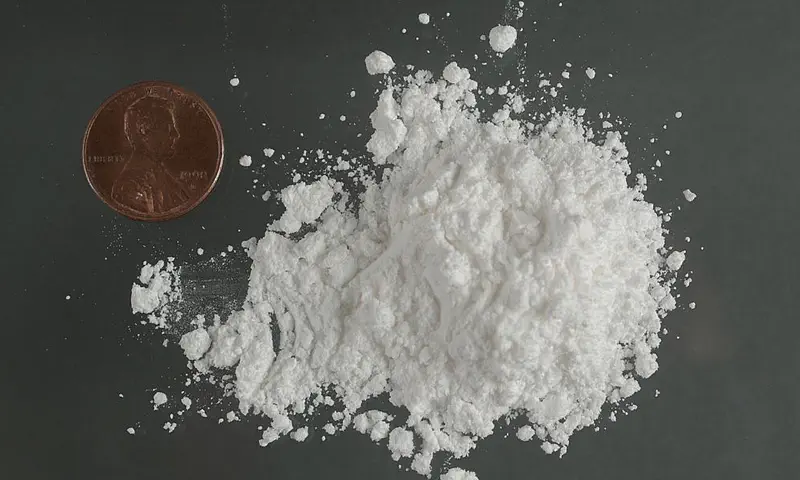DRUGS: WHAT YOU
NEED TO KNOW Booklet

Signs and Symptoms of Cocaine Addiction

Courtesy of DEA.gov
People who don’t have experience with cocaine may not know how to spot the signs of cocaine use. This article lays out signs and symptoms and short and long-term effects. With this information, family members and loved ones of cocaine users can get educated and take the first steps toward helping their loved ones.
Signs and Symptoms of Cocaine Use and Addiction
Signs of cocaine use can be broken down into physiological signs and behavioral/circumstantial indicators. Physical signs of cocaine use include:
- Cardiovascular complications
- Restlessness
- Dilated pupils
- Excited speech
- Increased energy and libido
- Difficulty swallowing
- Loss of sense of smell
- Damage to nasal passages
Behavioral, emotional, and circumstantial signs include:
- Anxiety, paranoia or euphoria
- Delusions or hallucinations
- Mood swings and depression
- Financial problems
- Lying about drug use
- Increased risky behavior
- Bizarre, violent outbursts
- Feeling/acting superior to others
- Having drug paraphernalia on one’s person
- Breaking friendships and relationships with others
Displaying just one of the above signs is not exactly a clear indicator that someone is using cocaine. But if someone exhibits numerous signs and symptoms outlined above, a family member or loved one should confront them and find out if they’re using cocaine.
Short and Long-Term Effects of Cocaine Use

Cocaine influences the user’s physical body, state of mind, emotions, and behavior. Following are lists of short-term and long-term effects of cocaine use. When observable, these effects can help concerned loved ones discover if someone they care about is using cocaine.
Some of the short-term effects of using cocaine include:
- Vertigo, tremors and seizures
- Euphoria and spurts of energy
- Dilated pupils
- Cardiac arrhythmias, heart attack or stroke
- Decreased need for food
- Decreased need for sleep
Long-term effects of cocaine use include:
- Death
- Decreased sexual function
- Perforation of nasal cavities and lung damage
- Contracting blood-borne diseases
- Serious skin infections and abscesses
- Perforations in the stomach and intestines
The above are by no means complete lists. But if a number of the short and long-term effects are observed in a loved one, their family members and friends should intervene.
The Scope of Cocaine Addiction in Europe
According to the European Monitoring Centre for Drugs and Drug Addiction (EMCDDA), cocaine is the most commonly used illicit drug in Europe, with usage rates highest in southern and western European nations.1
It is estimated that about 17.5 million European adults (ages 15 to 64) use cocaine, approximately 5.2% of that age group.
About 2.3 million young Europeans (ages 15 to 34) use cocaine, or about 1.9% of that age group.
In Ireland, Spain, the Netherlands, and the United Kingdom, young people use cocaine at a rate of 2.5% or more, indicating these nations have the highest rate of young adult cocaine use.

Though rates of cocaine use went down across Europe in the early-2000s, rates of usage in previous years have increased. Upwards trends in usage are most notable in Spain, the United Kingdom, and France. Also, usage trends regarding cocaine are diversifying, meaning more Europeans are using cocaine in different ways, like using crack cocaine instead of traditional powder cocaine.
When wastewater is tested to determine cocaine prevalence, cities in Belgium, Spain, and the United Kingdom report the highest percentage of cocaine contamination. Eastern European cities record the lowest rates of contamination.
Of wastewater tested in 33 European cities between 2015 and 2016, 22 reported an increase in cocaine prevalence, 4 reported a decrease, and 7 reported a stable situation.
Another paper outlined how, though the usage of most types of drugs declined through much of the early 21st century; cocaine use has continued to go up.2
One report published an increase in 1 million cocaine users in Europe in just one 12-month period.
Cocaine usage rates differ considerably, not only geographically but demographically. For example, while only 1.9% of European young adults use cocaine, about 13% of young people in the UK ages 16 to 29 who frequent pubs say they also use cocaine. For that same age group in the UK who do not go to pubs often, only 3.7% use cocaine.
The harmful effects of cocaine addiction are increasingly being felt in Europe, to the point where 22% of Europeans seeking help at drug treatment centers now cite cocaine as their primary drug of choice and their primary reason for needing treatment.
Finally, the illicit cocaine trade is one of Europe’s leading types of crime. According to one report, the cocaine trade is the third leading cause of crime in 21 of 27 EU countries.3
Addiction Rehab in Europe, Help for Cocaine Users
People who become addicted to cocaine usually find it impossible to stop using it alone. The drug’s effects are so powerful, and the addictive nature of the substance is such that addicts will seek it out and use it, despite countless reasons not to. They need to seek help at qualified drug addiction treatment centers.
If you suspect someone you know is using cocaine, check to see if they’re showing any signs and symptoms of cocaine use. If they are, work with them and insist they seek treatment. Help them find and enter a drug rehab center if needed. Please don’t wait until it is too late and they suffer a cocaine overdose or serious cocaine-related accident.
Sources:
-
EMCDDA. “European Drug Report 2017.” European Monitoring Centre for Drugs and Drug Addiction, 2017. emcdda.europa.eu ↩︎
-
NIH. “Cocaine use rises in Europe while overall drug use levels out.” National Library of Medicine, 2007. ncbi.nlm.nih.gov ↩︎
-
GI. “Under pressure. Is the EU ready to counter the global cocaine trade?” Global Initiative Against Transnational Organized Crime, 2022. globalinitiative.net ↩︎

 ®
®
